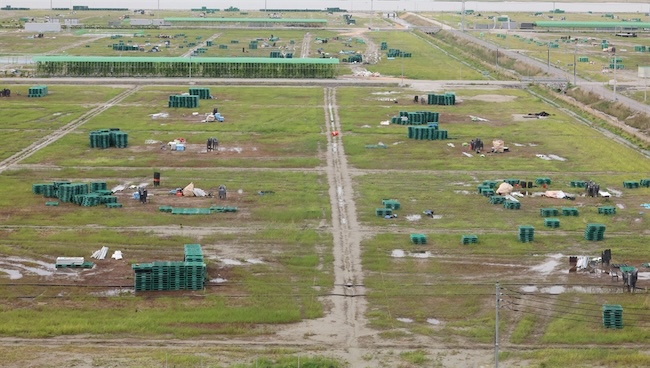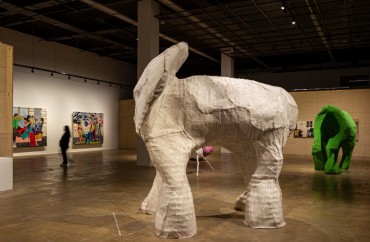BUAN, Aug. 2 (Korea Bizwire) – One year after the ill-fated 2023 World Scout Jamboree in Saemangeum, the vast campsite that once echoed with the voices of 42,600 young participants now stands silent and overgrown.
The event, dubbed “the worst public event in history,” has left a lingering impact on South Korea’s international reputation and domestic politics.
The sprawling 8.84-square-kilometer site, equivalent to 1,071 soccer fields, today bears little resemblance to the bustling camp it was intended to be.
A solitary three-story building, the Global Youth Leader Center, stands as a stark reminder of the event’s ambitious plans and subsequent failures.
Built at a cost of 42.9 billion won, the center was hastily used as a medical facility during the Jamboree, despite being incomplete. It now faces an uncertain future, with annual operating costs estimated at 2 billion won and no clear purpose defined.
The Jamboree’s troubled legacy extends beyond the physical site. The Board of Audit and Inspection of Korea has been conducting an investigation for 11 months, scrutinizing 11 organizations including the Ministry of Gender Equality and Family and the organizing committee.
The audit’s findings, eagerly anticipated, remain unreleased, hinting at the complexity of the issues involved.
Financial controversies continue to surface. The National Assembly Budget Office recently reported that the Ministry of Gender Equality and Family inefficiently managed its budget, leaving 4.7 billion won unused. This revelation has reignited debates about the government’s handling of the event.
International criticism has not abated. In April, the World Organization of the Scout Movement released a report highlighting numerous deficiencies in the event’s organization, including issues with safety, security, youth protection, medical support, and weather response.
The report notably criticized the Korean government’s excessive involvement, suggesting it marginalized the Korea Scout Association and exacerbated existing organizational challenges.
The organizing committee, which dissolved just last month, is preparing to release a white paper detailing the entire process from the event’s bid to its closure. This document is eagerly awaited, as it may shed light on the decision-making processes that led to the Jamboree’s problems.
For North Jeolla Province, which hosted the event, the aftermath has been mixed. While initially bearing the brunt of criticism, the province has gradually begun to recover its image and some of its slashed budget for Saemangeum development projects.
However, the grand economic projections — 9.8 trillion won in national economic effects and 5.5 trillion won for North Jeolla Province — have evaporated along with the event’s aspirations.
M. H. Lee (mhlee@koreabizwire.com)








